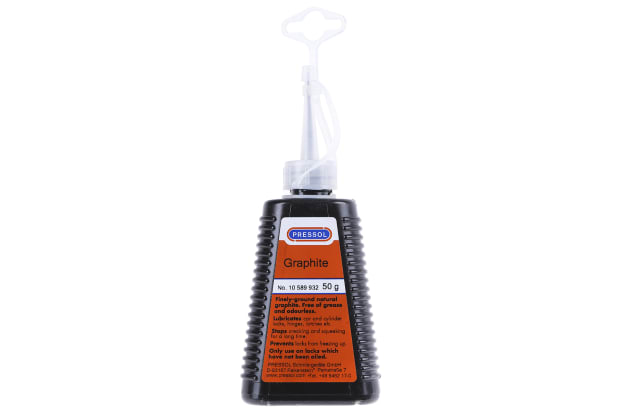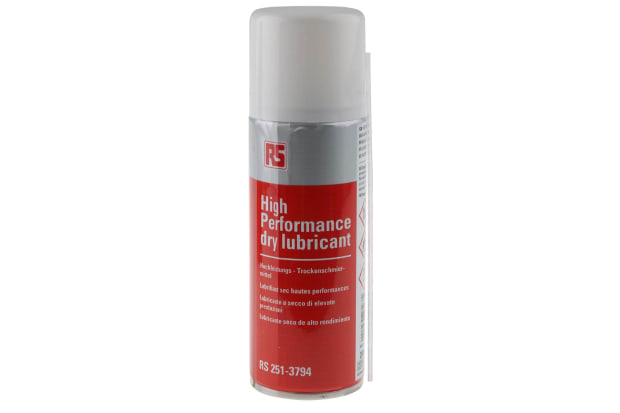- Published 23 May 2024
- Last Modified 23 May 2024
- 7 min
Machinery Lubricants Guide for New Zealand
Food-safe and certified - how to find the right lubricant.

Choosing the Right Lubricant: Food-Safe and Certified
In the realm of mechanical engineering and production, machinery lubricants play a vital role in ensuring seamless operations. Whether it's the smooth rotation of bearings, the steady movement of chains, or the overall performance of mechanical components, the right lubricant is essential. However, not all lubricants are created equal, especially in industries like food processing where stringent safety standards are paramount. Discovering the ideal lubricant for your machinery is crucial, and our guide is here to help you navigate through the options available in New Zealand.
Understanding Lubricants

Lubricants serve to reduce friction between surfaces, forming a protective layer that enables smooth motion. By minimizing friction, they alleviate heat build-up and wear, thus ensuring machines operate efficiently, leading to reduced downtime and maintenance costs. Beyond friction reduction, lubricants offer additional benefits such as improved power transmission, effective cooling, vibration dampening, and corrosion protection.
Key Advantages of Lubricants:
Key Advantages of Lubricants:
-
Minimized friction in motors
-
Controlled friction in drives
-
Protection against oxidation
-
Prevention of thread seizing
-
Removal of contaminants
-
Viscosity maintenance under high temperatures
-
Noise reduction
-
Prolonged machinery lifespan
Applications of Lubricants

In the diverse landscape of processes and machinery, lubricants find their place in various forms, often enhanced with additives to bolster their performance. These additives can transform and enhance lubricants, offering properties that they may not naturally possess. For instance, they can prevent deposits on hot surfaces, reduce sludge formation from fluid impurities, and provide protection against rust formation. Additionally, they can modify viscosity characteristics, extend flow rates at lower temperatures, mitigate oxidation processes, and optimize surface tension.
In industries where consumer protection is paramount, such as food production, cosmetics, pharmaceuticals, feed, and tobacco, lubricants must meet stringent requirements. Specifically formulated lubricants are employed to ensure both product safety and smooth production processes.
Types of Lubricants
Lubricants come in various forms, each with its unique characteristics:
- Solid lubricants (e.g., graphite)
- Semi-solid lubricants (greases or pastes)
- Liquid lubricants (oils and cooling lubricants)
- Gaseous lubricants (air)
In industrial settings and heavy-duty plants, mineral or synthetic lubricants, greases, and synthetic oils are predominantly utilized.
Characteristics of Common Lubricants:
Oil: Exhibits high creeping and wetting capacities, able to flow into minute gaps and dissipate heat effectively. However, oiling may limit bearing speed and reduce cooling capacity, making it suitable for high-speed and high-temperature applications.
Grease: Forms seals against impurities like moisture and foreign bodies, remaining at the lubrication point. It offers superior start/stop performance compared to machine oil and is commonly used in roller and plain bearings, spindles, fittings, seals, guides, chain drives, and gears.
Pastes: Contain a higher concentration of solid lubricants than greases, offering excellent separating, lubricating, and anti-rust properties even under extreme conditions. They are suitable for screw connections, pressing pins, bolts, and gears.
Common Lubricant Applications
- Fat-Free Lubricants: Ideal for lubricating plastics, paper, textiles, and wood.
- Rustproofing Lubricants: Provide reliable protection against material changes on contact surfaces.
- Cleaning Lubricants: Remove surface impurities and oxidation from metallic contact surfaces.
- Friction-Free Lubricants: Enhance grip and reduce friction.
By understanding the diverse applications and characteristics of lubricants, industries can ensure efficient and effective operations across various sectors in New Zealand.
Choosing the Right Lubricant for Specific Applications
Apart from multipurpose lubricants, a plethora of specialized lubricants tailored to specific tasks are readily available in the market. Here are some examples:
- Anti-corrosion Lubricants: Formulated with a molybdenum base, these lubricants are water-resistant and dirt-repellent, ideal for combating corrosion.
- Wire Cable Lubricants: Dehydrating oil-based lubricant sprays designed specifically for use on wet ropes or cables, ensuring smooth operation.
- Electronic Component Lubricants: Colourless silicone oils, perfect for lubricating, insulating, and protecting sensitive electronic components.
- Chain Lubricants: Available for high-temperature applications and food-grade environments, ensuring optimal performance and longevity of chain links and drives.
- Wood Lubricants: Clear lubricants based on PFTE, suitable for use on wood, cardboard, paper, and textiles.
- Hydraulic System Lubricants: Temperature-resistant and food-safe lubricants tailored for air compressors and hydraulic equipment.
- Pneumatic Tool Lubricants: FPS lubricating sprays formulated for dry, non-greasy surfaces, ideal for pneumatic tools.
- Hinge Lubricants: Options include non-toxic and biodegradable lubricants derived from rapeseed oil, ensuring smooth operation of hinges.
- Lock Lubricants: Grease-free, odourless graphite dry lubricant powders, offering precise lubrication for locks.
Conditions for Lubricants in the Food Industry
The food and beverage industry demands lubricants that meet stringent food safety standards. These lubricants must withstand daily cleaning with water, steam, and detergents, and resist substances like animal fats, blood, salts, sugar, and fruit acids. Moreover, in bakery machines, lubricants must prevent fine flour dust from bonding or settling, while enduring extreme heat or cold during production.
To meet these challenges, a wide array of food-grade lubricants is available, tailored to specific uses, expertise, and individual experiences.
Approval Standards for Food Processing Lubricants
When lubricants may have incidental contact with food, food-grade grease is essential. Regulatory bodies such as the National Sanitation Foundation (NSF) and the USDA determine which lubricants are permissible. Products with NSF-H1 certification or USDA-H1 approval meet stringent food safety criteria. Since 2006, the ISO 21469 standard has also uniformly regulated food-grade lubricants, ensuring consistency and reliability.
Lubricants with NSF approval must be tasteless, odourless, and safe, with raw materials free from heavy metals and restricted additives. Even approved additives like sulphur and phosphorus are often limited in quantity to ensure safety.
Remember: Even with H1 lubricants deemed safe, precautions must be taken to prevent food contamination at all times.
NSF Certifications for Lubricants
In the realm of lubricants used in the food industry, NSF certifications play a crucial role in ensuring safety and compliance. Here are the key certifications:
-NSF H1: Designed for applications where incidental food contact is possible, ensuring lubricants are safe for use in food processing environments.
-NSF H2: Intended for applications where lubricants will not come into contact with food, ensuring they are free from toxic components.
-NSF H3: Soluble lubricants primarily used for preventing corrosion on hooks or knives; these lubricants must be wiped off before food contact.
-NSF 3H: Anti-caking agents specifically formulated for production lines with direct or continuous contact with food, with precautions to avoid food sticking to equipment surfaces.
Food-Grade Base Oils
Base oils form the foundation of lubricants used in food processing. There are four types of food-grade base oils approved for this purpose, each with its own set of advantages and disadvantages.
Lubricant Standards
Standards for lubricants can be categorized into regulations governing designations and those dictating minimum requirements. Some examples include:
- DIN 51503: Minimum requirements for refrigeration oils.
- DIN 51517: Minimum requirements for lubricating oils.
- DIN 51520: Minimum requirements for cooling lubricants.
- DIN 51524: Minimum requirements for hydraulic oils.
Properties of Lubricants
Understanding the physical properties of lubricants is crucial in selecting the right lubricant for specific tasks. These properties are influenced by factors such as material, processing steps, tool surface, processing speed, and temperature. Key properties include:
- Density: Influenced by pressure and temperature, affecting performance.
- Viscosity: Determines the flow properties and thickness of the oil layer between surfaces.
- Aniline Point: Indicates the lowest temperature at which aniline and oil still form a mixture, crucial for motor applications.
- Dropping Point: Indicates the transition from semi-solid to liquid state, important for high-temperature processes.
- Setting Point: Indicates the lowest temperature at which lubricant still flows, crucial for cold-intensive processes.
- Flash Point: Indicates the temperature at which a flame is immediately formed by contact with an ignition source.
- Neutralising Capacity: Indicates the ability to balance free acids in the oil, crucial for lubricant aging.
Environmentally-Friendly Lubricants
Bio-lubricants and bio-oils, certified environmentally friendly according to OECD 301, are derived from renewable raw materials or heavy-metal-free mineral oils. Typically sourced from vegetable or animal fats, with rapeseed oil being a common component, they are used as normal lubricants in various applications, with considerations for high-temperature environments.
Understanding these certifications, base oils, standards, and properties is essential in selecting the right lubricant for food processing applications while maintaining safety and compliance standards.


